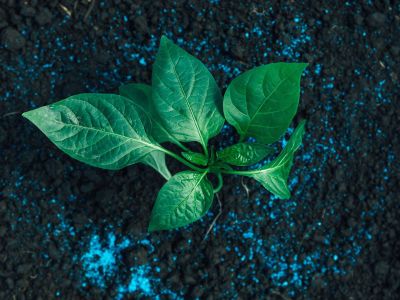Best Fertilizer for Pepper Plants
The best fertilizer for your pepper plants depends on your soil. It’s a smart idea to get it tested to find out the nutrient content before making amendments. However, adding compost to the entire vegetable bed prior to planting is always a good idea too. Generally, a balanced fertilizer works for peppers. But if your soil testing shows you have enough phosphorus, you should choose a low- or no-phosphorous fertilizer. Nitrogen is particularly important for stimulating good pepper growth, but you have to know the best time to fertilize peppers to get the best results.
When to Fertilize Peppers
First, broadcast the soil with a general fertilizer or compost before you put any plants in the ground. Then, front load the plants with nitrogen for optimal growth. Adding the right amount of nitrogen will stimulate stem and foliage growth so that your pepper plants will grow big enough to support several fruits each. Expert gardeners suggest you add your nitrogen fertilizer on this schedule:
Apply about 30 percent of the nitrogen as part of the pre-planting broadcast. Two weeks after planting, add 45 percent of the nitrogen. Save the last 25 percent for the final weeks as the pepper harvest is wrapping up.
Importance of Staking Pepper Plants
In addition to more and bigger fruit, a consequence of fertilizing pepper plants is that your plants will grow bigger. Pepper plants are not able to stay erect on their own at a certain point, so be prepared to start staking peppers as they grow. For a row of peppers, place stakes between each plant. Tie several parallel strings between each stake to provide the support the plants need to stay upright. If you only have a few plants or potted peppers, just adding a stake and zip ties to each plant should be adequate.
